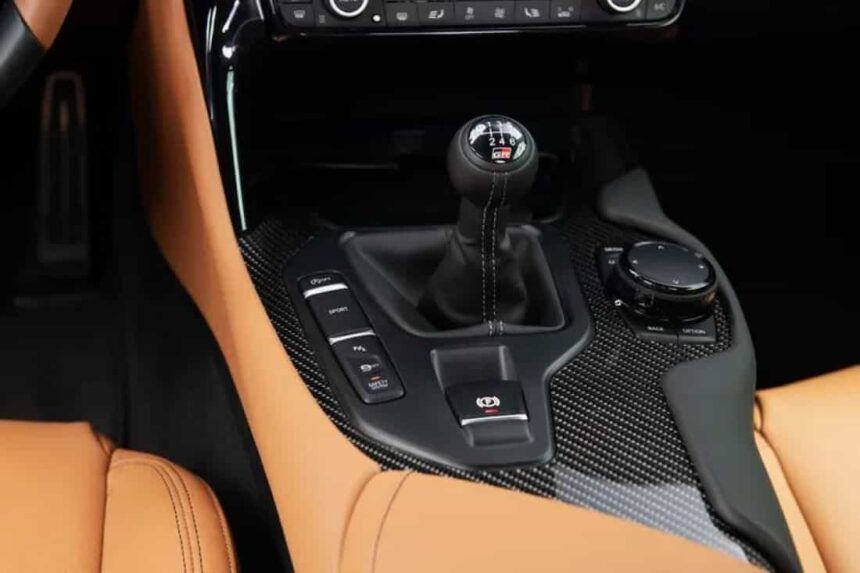The automotive industry is undergoing a profound transformation with the surge of electric vehicles (EVs). While most car manufacturers are embracing this electric future, many are struggling to let go of the past. One such example is Toyota, the world’s largest automaker, which is reportedly developing an electric vehicle prototype that aims to replicate the experience of driving a manual transmission car by integrating fake features Into EVs.
This prototype features a gear shift that has no physical connection and a floor-mounted speaker that produces simulated engine noises. Toyota even goes as far as simulating stalling if the controls are mishandled, all in an effort to deliver the complete manual driving experience.
It’s important to note that this is an electric vehicle, devoid of any traditional engine, drive shaft, or gears. The entire simulation relies on software and clever tricks. Toyota claims that its goal is to preserve the driving experience for car enthusiasts, but it remains uncertain whether people actually desire this amalgamation.
As someone who is particularly passionate about cars, I understand that people generally dislike artificial experiences. The fake meat industry, for instance, has faced its fair share of criticism. It stands to reason that this artificial approach by Toyota might face a similar backlash.
Regrettably, Toyota is not alone in attempting to awkwardly blend the industry’s past with its future. Dodge, for example, has been developing false engine sounds for its planned lineup of electrified muscle vehicles. The initial attempt with the Charger Daytona SRT concept garnered overwhelmingly negative reactions, with people comparing the sound to a banshee’s wail—an unfavourable association. Consequently, Dodge’s CEO had to assure fans that the sound was still a work in progress and not yet perfected.
However, even assuming that a fake sound could be developed and accepted, it merely needs to be tuned in a specific manner and have its levels adjusted slightly to evoke the desired positive response from car enthusiasts. Only then will it be deemed ready for mainstream use?
Other examples of this struggle to reconcile the past with the future include an all-electric Ford Mustang featuring a six-speed manual gearbox (fortunately, only a one-off for now), and Jeep’s Magneto concept, which incorporates a manual transmission. Lexus, which is in charge of Toyota’s high-performance EV operations, is also working on a shifting mechanism that simulates the feel of a clutch and stick shift in an electric vehicle.
All of these initiatives show the auto industry’s serious concern about the imminent obsolescence of internal combustion engines.. It is particularly peculiar that manual transmissions are being emphasized, given their gradual decline over the past few decades. The inclusion of manual transmissions in new cars has significantly diminished. CarMax reported that in 2018, only 3.7 percent of new vehicles sold were equipped with manual transmissions, and this number dropped to 2.7 percent in 2020.
Toyota engineers claim that their intention is to “wow” customers with fake engine noises and a non-functional stick shift. However, I doubt that customers will be truly impressed by a technology that has been a staple in driving simulators found in video game arcades for decades. If I wanted to experience the sensation of a rattling steering wheel while navigating a banked curve at 120 mph, I would simply go to the mall and play Hard Drivin’. (Do arcades and malls still exist?)
Automakers not only harbour deep anxieties about the demise of internal combustion engines but also maintain a strong skepticism towards the rise of EVs. Despite investing billions of dollars in EV development, they struggle to anticipate the emergence of EV-centric subcultures, if any, and worry about the diminishing relevance of hobbyists and aftermarket restorations—markets the auto industry has thrived upon for decades.
We have witnessed the formation of fan communities around EVs, predominantly centered around Tesla. This might explain why the rest of the industry struggles to comprehend what lies ahead. Consequently, we are seeing these gimmicky attempts to appease gearheads and drag racers who are apprehensive or openly resistant to the rise of EVs. Automakers are reluctant to lose these enthusiasts, and their concerns are understandable. After all, loud cars, speed, and the satisfying sound of shifting gears are beloved aspects of the driving experience. EVs, with their near-silent acceleration, come across as eerie and strange, and many people find this unappealing.
However, we cannot allow the endangered combustion engine to dictate the terms of our electric future. This is why many electric trucks entering the market are massive beasts with larger-than-necessary batteries. Cars will continue to be fast, and in most cases, even faster than before. EVs will inevitably give rise to their unique subcultures and enthusiast communities in due course. But let’s not pretend they are something they are not.










